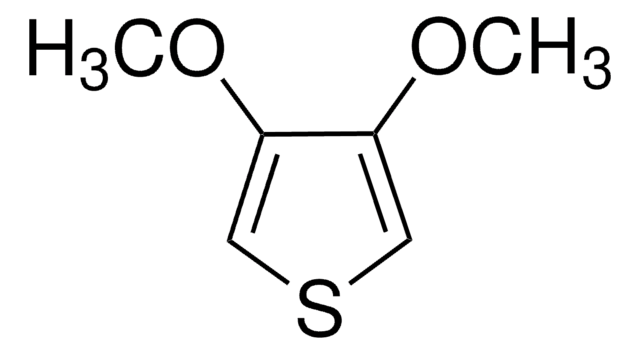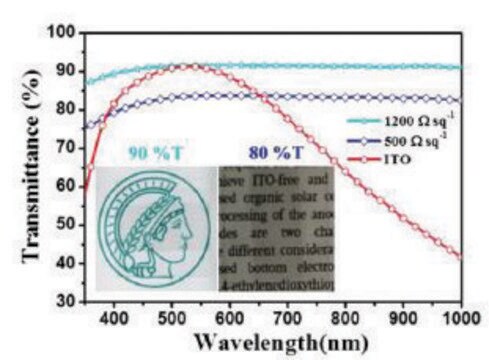추천 제품
분석
97%
refractive index
n20/D 1.5765 (lit.)
bp
193 °C (lit.)
density
1.331 g/mL at 25 °C (lit.)
저장 온도
2-8°C
SMILES string
C1COc2cscc2O1
InChI
1S/C6H6O2S/c1-2-8-6-4-9-3-5(6)7-1/h3-4H,1-2H2
InChI key
GKWLILHTTGWKLQ-UHFFFAOYSA-N
일반 설명
3,4-Ethylenedioxythiophene (EDOT) is an electro-active conductive monomer with a thiol group that combines an electron donor and electron acceptor in a donor-acceptor-donor arrangement.
Monomer used in the synthesis of conducting polymers.
애플리케이션
EDOT can be polymerized to form poly(3,4-ethylenedioxythiophene) (PEDOT) for use as an electrochromic polymer (EC) based coating for a variety of applications like solid state organic electrochemical supercapacitors (OESCs), electrochromic devices (ECDs), and carbon nanotubes (CNTs) based electrochemical devices for diabetes monitoring.
It can be used:
It can be used:
- As a reductant in a one-pot synthesis of gold nanoparticles from HAuCl4 (254169).
- As a starting material used in palladium-catalyzed mono- and bis-arylation reactions.
- In the synthesis of conjugated polymers and copolymers, with potential optical applications.
신호어
Danger
유해 및 위험 성명서
Hazard Classifications
Acute Tox. 3 Dermal - Acute Tox. 4 Oral - Eye Irrit. 2
Storage Class Code
6.1C - Combustible acute toxic Cat.3 / toxic compounds or compounds which causing chronic effects
WGK
WGK 2
Flash Point (°F)
219.2 °F - closed cup
Flash Point (°C)
104 °C - closed cup
개인 보호 장비
Eyeshields, Faceshields, Gloves, type ABEK (EN14387) respirator filter
이미 열람한 고객
Shaivya Gupta et al.
Materials science & engineering. C, Materials for biological applications, 103, 109733-109733 (2019-07-28)
Helicobacter pylori (H. pylori) immunosensor based on platinum nanoparticles/poly(3,4-ethylenedioxythiophene)/reduced graphene oxide (Ptnano/PEDOT/red-GOx) modified gold electrode (Au-ET) was stepwise fabricated for the detection of cytotoxin-associated gene A antibody (CagA antibody). H. pylori is a microaerophillic and a Gram-negative bacteria that causes
Fei Li et al.
Advanced science (Weinheim, Baden-Wurttemberg, Germany), 6(20), 1901051-1901051 (2019-10-23)
The rapid development of microelectronics has equally rapidly increased the demand for miniaturized energy storage devices. On-chip microsupercapacitors (MSCs), as promising power candidates, possess great potential to complement or replace electrolytic capacitors and microbatteries in various applications. However, the areal
Hnin Yin Yin Nyein et al.
Science advances, 5(8), eaaw9906-eaaw9906 (2019-08-28)
Recent technological advancements in wearable sensors have made it easier to detect sweat components, but our limited understanding of sweat restricts its application. A critical bottleneck for temporal and regional sweat analysis is achieving uniform, high-throughput fabrication of sweat sensor
Aiva Simaite et al.
Nanotechnology, 28(2), 025502-025502 (2016-12-03)
During cyclic actuation, conducting polymer based artificial muscles are often creeping from the initial movement range. One of the likely reasons of such behaviour is unbalanced charging during conducting polymer oxidation and reduction. To improve the actuation reversibility and subsequently
Towards sustainable solid-state supercapacitors: electroactive conducting polymers combined with biohydrogels.
Perez-Madrigal MM, et al.
Journal of Material Chemistry A, 4(5), 1792-1805 (2016)
자사의 과학자팀은 생명 과학, 재료 과학, 화학 합성, 크로마토그래피, 분석 및 기타 많은 영역을 포함한 모든 과학 분야에 경험이 있습니다..
고객지원팀으로 연락바랍니다.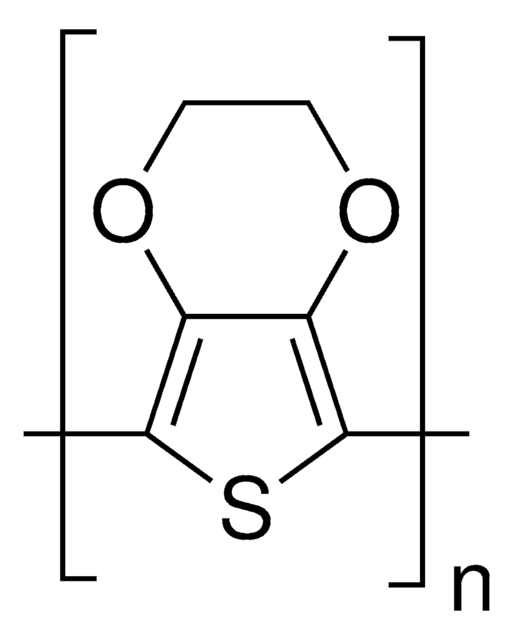
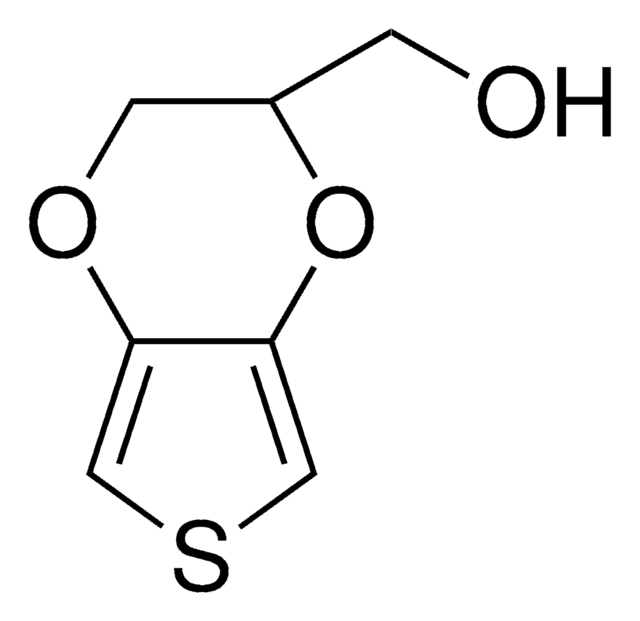

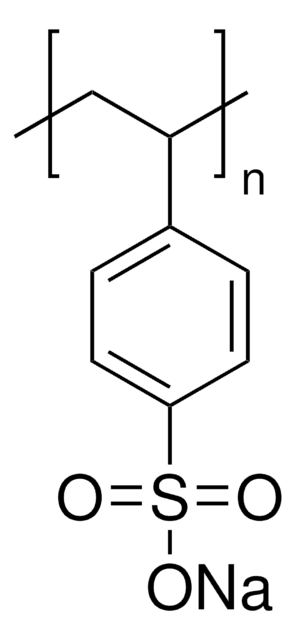

![2-Chloromethyl-2,3-dihydrothieno[3,4-b]-1,4-dioxine 95%](/deepweb/assets/sigmaaldrich/product/structures/422/187/4cc7b858-9e06-4ce2-8d39-d817b8313964/640/4cc7b858-9e06-4ce2-8d39-d817b8313964.png)


